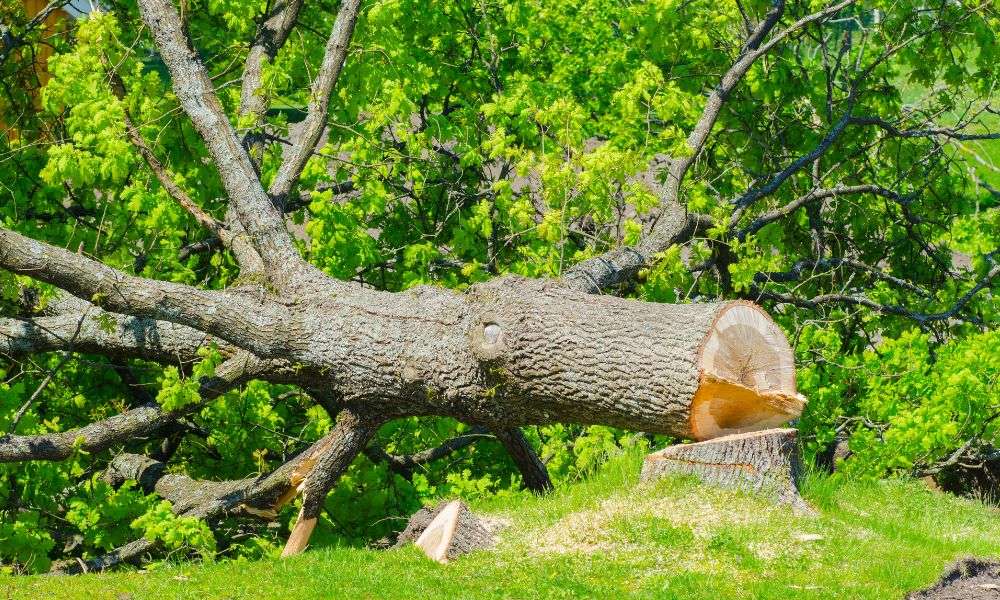How to Choose the Right Tree Removal Company
Before hiring a tree removal service, check that the company is licensed, insured, and experienced with projects similar to yours. Asking for a written estimate, reviewing customer feedback, and understanding the cleanup process can make your experience smoother. Some providers may also offer stump grinding or emergency removal services, which could add value depending on your needs.

Removing trees from your property is a significant decision that requires professional expertise. While DIY approaches might seem cost-effective, the risks associated with improper tree removal can lead to property damage, personal injury, and even legal issues. Professional tree removal companies have the equipment, knowledge, and insurance to handle the job safely. However, not all services offer the same level of quality or value. Understanding how to evaluate potential providers can save you time, money, and potential headaches.
What to Look for in Licensed Tree Removal Services
When searching for a tree removal company, proper licensing should be your first consideration. Licensed professionals have demonstrated their knowledge of local regulations and safety procedures. Ask potential companies to provide their license numbers and verify them with your local licensing board. Additionally, legitimate tree removal services should carry both liability insurance and workers’ compensation insurance. Liability insurance protects your property if accidents occur during the removal process, while workers’ compensation covers any injuries sustained by crew members on your property.
Experience is another crucial factor. Companies with several years in business typically have encountered various challenging situations and developed efficient removal techniques. Ask about their specific experience with trees similar to yours in size, species, and location. Many reputable companies will have portfolios or case studies of past projects they can share, demonstrating their capabilities and expertise.
How to Evaluate Emergency Tree Service Providers
Emergency tree removal situations require prompt, professional attention. When evaluating emergency service providers, response time is critical. Reputable companies offer 24/7 availability and can typically provide estimated arrival times. Before an emergency occurs, research companies that specifically advertise emergency services and keep their contact information accessible.
Equipment readiness is equally important for emergency situations. Professional emergency tree services should have specialized equipment immediately available, including cranes, bucket trucks, and rigging systems for safely removing damaged trees from precarious positions. During your evaluation, ask potential providers about their emergency protocols, equipment availability, and how they prioritize safety during urgent situations.
How to Find Affordable Tree Cutting Services
Cost is naturally a consideration when selecting tree removal services. To find affordable options without sacrificing quality, obtain written estimates from at least three different companies. These estimates should clearly outline the scope of work, including whether stump removal, wood disposal, and cleanup are included or available as add-on services.
Timing can significantly impact pricing. Many tree services offer discounted rates during their off-peak seasons, typically late fall through winter in most regions. Planning non-emergency removals during these periods can result in substantial savings. Additionally, some companies offer package deals if you need multiple trees removed simultaneously, so inquire about potential volume discounts.
Comparing Local Tree Removal Companies in Your Area
Local knowledge can be invaluable when it comes to tree removal. Companies familiar with your area understand local soil conditions, tree species, and potential challenges specific to your region. They’re also likely to be more familiar with local regulations regarding tree removal permits and restrictions.
Community reputation matters significantly in this industry. Check online reviews on platforms like Google, Yelp, and the Better Business Bureau, but don’t stop there. Ask neighbors, friends, and local community groups for recommendations and experiences. Companies that have served your community for years typically value their reputation and provide more reliable service.
Tree Removal Service Cost Comparison
Understanding typical pricing structures can help you evaluate whether quotes you receive are fair and competitive. Several factors influence tree removal costs, including tree size, location, accessibility, and additional services required.
| Company Type | Small Tree (under 30ft) | Medium Tree (30-60ft) | Large Tree (60-80ft) | Extra Large (80ft+) |
|---|---|---|---|---|
| Budget Services | $150-$400 | $450-$700 | $700-$1,100 | $1,200-$2,000 |
| Mid-Range Services | $275-$500 | $500-$900 | $900-$1,500 | $1,500-$3,000 |
| Premium Services | $400-$650 | $650-$1,200 | $1,200-$2,000 | $2,000-$4,500+ |
Prices, rates, or cost estimates mentioned in this article are based on the latest available information but may change over time. Independent research is advised before making financial decisions.
Additional factors that can increase costs include emergency service (typically 1.5-2x standard rates), difficult access locations, proximity to structures, additional services like stump grinding (averaging $100-$400 depending on size), and hauling away wood (which may cost $50-$250 extra if not included).
Verifying Credentials and Safety Practices
Beyond licensing and insurance, reputable tree removal companies follow industry safety standards and employ certified arborists. Look for companies with International Society of Arboriculture (ISA) certified professionals on staff. These individuals have demonstrated knowledge in tree care through examination and continued education.
Safety practices are evident in how companies approach projects. During initial consultations, professional services will conduct thorough site assessments, identify potential hazards, and explain their removal strategy. They should provide their crews with proper safety equipment and follow OSHA guidelines. Companies that prioritize safety typically have clean safety records, which you can verify by asking about their experience modification rate (EMR) or workers’ compensation history.
When selecting a tree removal company, take your time to thoroughly research options, verify credentials, and compare services. The right provider will offer transparent pricing, demonstrate professional expertise, and prioritize safety throughout the removal process. By carefully evaluating these factors, you can ensure your tree removal project is completed efficiently, safely, and at a fair price.




